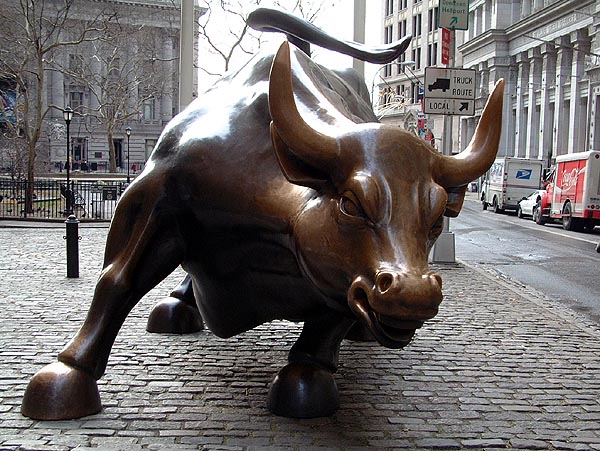Although the Federal Reserve is obviously trying to bolster asset prices there are also several bullish fundamental supports underneath the most recent big run in stocks. At least that’s the story from LPL Financials Jeff Kleintop. He says there are big 4 supports that will keep the market from declining substantially (via LPL Financial):
- Earnings – Most importantly, while stocks have been range bound, earnings have not. At just over $100, earnings per share for S&P 500 companies are now double what they were at the peak of the market in 2000. It is interesting to note that at the bottom of the market decline in early 2009 earnings per share were still greater than they were at the peak of the market in 2000. While earnings could experience a drop if the U.S. were to return to recession, the current level of earnings may not decline anywhere near as much as they did in the past downturn. A 20% decline in earnings, often accompanying recessions, would result in earnings in the range of $80 and supportive of a market bottom at higher levels on the S&P 500 index than the lows of the past 15 years.
- Dividends – Supported by higher earnings, dividends per share for S&P 500 companies are much higher than at prior peaks in the index. For example, the annualized dividends per share for the S&P 500 currently total $31.09, more than 10% higher than at the last peak that occurred near the end of the third quarter of 2007, and nearly double the $16.32 of the first quarter of 2000.
- Valuations – The most commonly accepted measure of the value of stocks, the price-to-earnings ratio (the current price of the index divided by the earnings per share expected to be generated over the next year), are half of the lofty levels when the S&P 500 index first neared 1500 in the year 2000. When stocks most recently reached the low of the range in the first quarter of 2009 the price-to-earnings ratio was 12.3. Since then it has not risen much and currently stands at 12.9, below the two prior bottoms. For the S&P 500 to drop all the way back to the prior lows in price the valuation would need to decline to the single digits—levels not seen since the much worse economic backdrop of double-digit inflation and unemployment in the early 1980s.
- Economy – U.S. economic output, measured by GDP, has also grown dramatically. At $15.6 trillion, U.S. GDP is over 50% larger than in the first quarter of 2000 when it stood at $9.7 trillion.
Mr. Roche is the Founder and Chief Investment Officer of Discipline Funds.Discipline Funds is a low fee financial advisory firm with a focus on helping people be more disciplined with their finances.
He is also the author of Pragmatic Capitalism: What Every Investor Needs to Understand About Money and Finance, Understanding the Modern Monetary System and Understanding Modern Portfolio Construction.


Comments are closed.